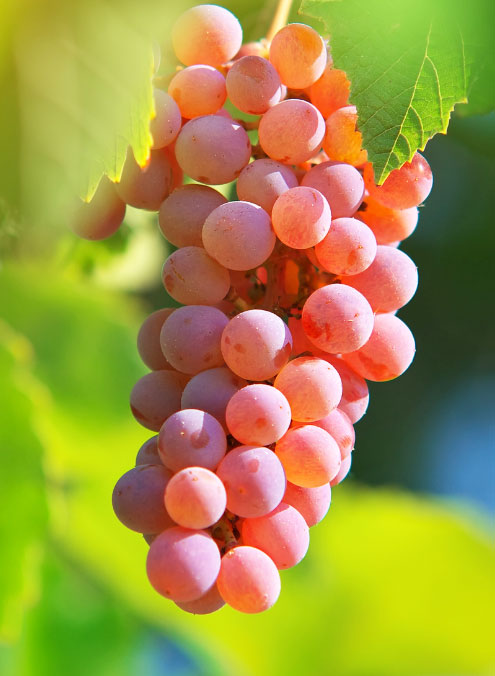
Pinot Gris
Pinot Gris is a natural mutation of Pinot Noir, easily recognized by its grayish-pink skin. While often associated with light, crisp wines under the name Pinot Grigio, in the world of natural wine, Pinot Gris shows a much broader range. It can be used to make skin-contact (orange) wines, lightly oxidative whites, or richer, dry or off-dry expressions, especially when made without additives or industrial processes.
This grape thrives in cooler climates and well-drained limestone soils, making it a good match for many small, organic and biodynamic vineyards. Its natural high sugar potential and moderate acidity mean it can develop well even with minimal intervention. That’s why Pinot Gris is a favorite for natural winemakers—it doesn’t need much manipulation to give interesting, full-flavored wines.
Depending on how it’s grown and vinified, Pinot Gris can be soft and round with notes of ripe pear, peach, and honey, or sharper with citrus and mineral touches. Skin contact versions can have a copper hue (called “ramato” in Italy) and bring deeper aromas like tea, herbs, or dried flowers. It’s also one of the few grapes that works well for late harvest and botrytized sweet wines without losing freshness.
Natural Pinot Gris wines often stand out for their texture and versatility. They pair well with many foods but are just as good on their own. Whether you're drinking a cloudy, slightly funky orange wine or a lean, dry white, Pinot Gris has something to say—quietly, but clearly.
Also known as: Pinot Grigio, Grauburgunder, Ruländer, Sivi Pinot, Szürkebarát, Rulandské šedé, Grauer Burgunder.
-
Dinavolo Rosso
Vendor:DenavoloRegular price €25,00Regular priceUnit price per -
Sivi Pinot Grigio
Vendor:RadikonRegular price €42,00Regular priceUnit price per -
Pinot Gris
Vendor:Matic WinesRegular price €18,00Regular priceUnit price per -
Kiddo Skins
Vendor:Milan NestarecRegular price €20,00Regular priceUnit price per -
Liquid Sunshine
Vendor:KristinusRegular price €19,00Regular priceUnit price per -
Liquid Sundowner
Vendor:KristinusRegular price €20,00Regular priceUnit price per -
Hijo de Puszta
Vendor:Kollektiv PeternellRegular price €32,00Regular priceUnit price per












